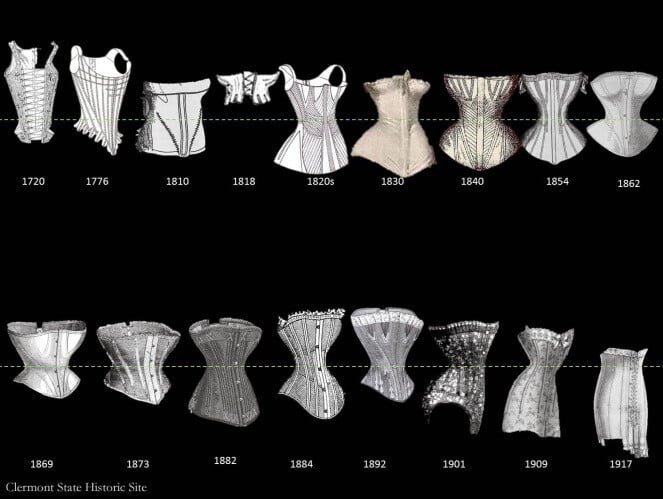By the 1830s, steel stays had begun to replace the classic whalebone. The diarist Emily
Eden recorded that she had to obtain a silver “husk” before accompanying her brother
to India because a humid climate rusted the usual steel and spoilt the garment. In 1839,
a Frenchman by the name of Jean Werly made a patent for women’s corsets made on
the loom. This type of corset was popular until 1890: when machine-made corsets
gained popularity. As seen in various fashion advertisements of the era, the common
corset cost one dollar ($1). Before this, all corsets were handmade – and, typically,
home-made
Late 19th century
For dress reformists and men of the late 1800s, corsets were a dangerous moral ‘evil,’
promoting promiscuous views of female bodies and superficial dalliances with fashion.
Corset makers exaggerated health risks, claiming they could remove ribs, rearrange
internal organs, and impair fertility. Weakness and general depletion of health were also
attributed to excessive corsetry. The only way many women could express themselves
was through fashion, and men did everything they could to discourage it. A throng of
male voices clamoring against tightlacing joined the reformers’ and male critiques of the
corset. In the 19th century, tightlacing wasn’t common, but horror stories of the women
who wore it constantly angered enough people. Doctors counseled their patients
against tightlacing, while preachers warned against it.
The fashionable narrow-hipped and narrow-skirted silhouettes of 1908 to 1914
called for the corset’s lower edge to be elongated. New corsets covered the thighs
and changed the hip position, making the waist appear higher and wider. New
fashions were considered uncomfortable, cumbersome, and required elastic
fabric strips. In 1911, rubberized elastics made it possible for the girdle to replace
the corset, but the garments were known as girdles because they were designed
to reduce hip size. Apparently, waist nipping corsets made a comeback in 1939,
but World War II ended their return to fashion. Warner released a corset known
as ‘The Merry Widow’ in 1952. In 1952, Lana Turner’s character played the Merry
Widow in a movie of the same name, designed by the famous Maidenform
company
By- Aditi Singh
AIFT 4th Year
Mentor- Ms. Kavita Sharma & Ms. Vinita Juneja
- Under the aegis of Axis Educational Society

Axis Colleges ©2024 / All Rights Reserved

